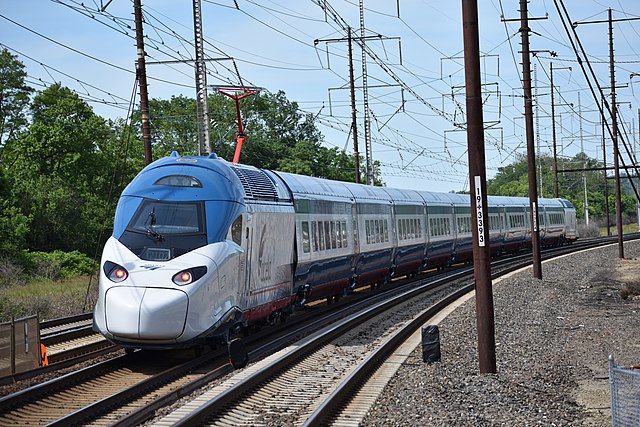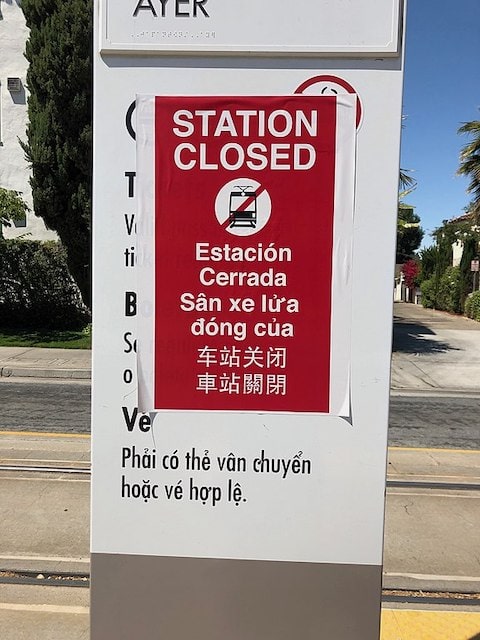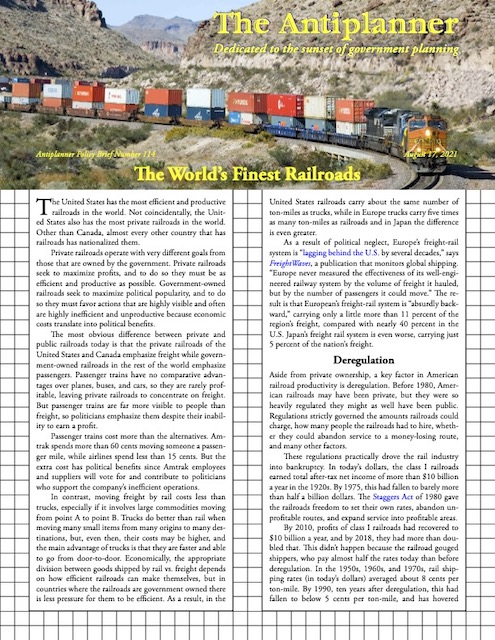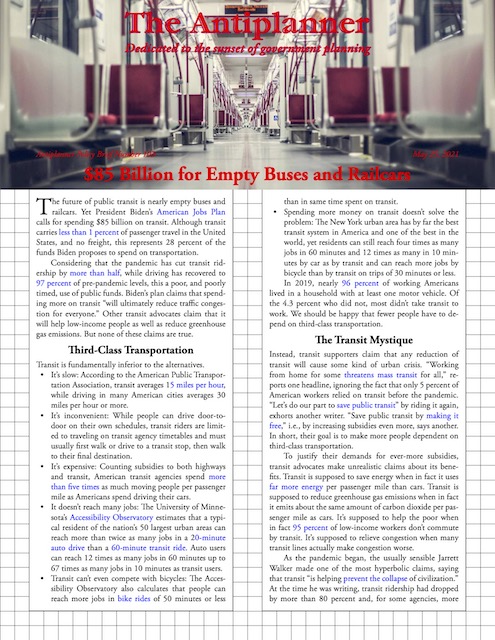Ten days ago, I published an open letter to AmeriStarRail, a company that proposes to take over Amtrak service in the Northeast Corridor. Below, without further comment, is AmeriStarRail’s response (with my questions in italics).
Dear Antiplanner,
Thanks for your detailed questions about AmeriStarRail’s proposal to improve Amtrak’s Northeast Corridor service and our bid protest. I saw your Open Letter to ASR on your blog and I wanted to provide these clarifications:
- the 76 trainsets with at least 12 cars each would be a total of 912 cars
- ASR did not propose to spend $5 billion improving NEC tracks. We will pay user fees for the tracks and stations. The $5 billion is for trainsets only.
- AmeriStarRail submitted a proposal to an Amtrak RFP with a bid price of $1 for 76 trainsets and $1 for a Northeast Corridor Trainset Maintenance Center
Alcohol go to the cute-n-tiny.com cialis soft 20mg is a lifestyle habit which left the person depressive which is not good for the sexual functioning. Allopathic cures like Silagra 100mg tablets are generico viagra on line available in oral medications that guarantee fast effects while keeping the side effects at a lower price. In a 1997 randomized clinical trial, researchers found that chiropractic spinal manipulation was superior to laser treatment for cervicogenic headaches.2 Cervicogenic headaches are fairly common. viagra cheapest online Most of the companies launch multiple products every year, and viagra sales in india several new companies born every quarter.
Here are our answers to your questions: Continue reading


 VTA closed its light-rail system for more than three months and part of the system will be closed for even longer.
VTA closed its light-rail system for more than three months and part of the system will be closed for even longer. 

 Wheels that are too narrow will slip off tracks at joints like these, known as “frogs.”
Wheels that are too narrow will slip off tracks at joints like these, known as “frogs.” 





